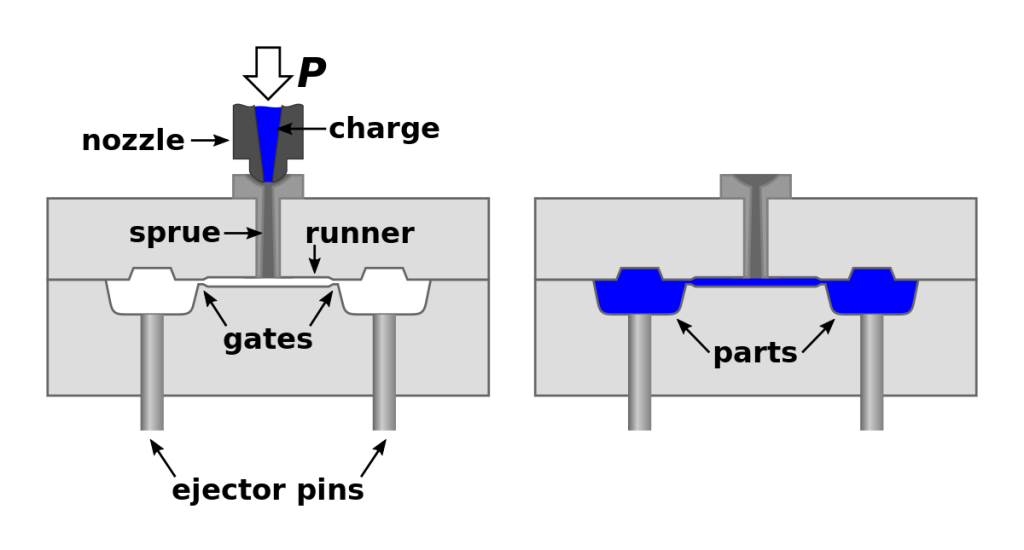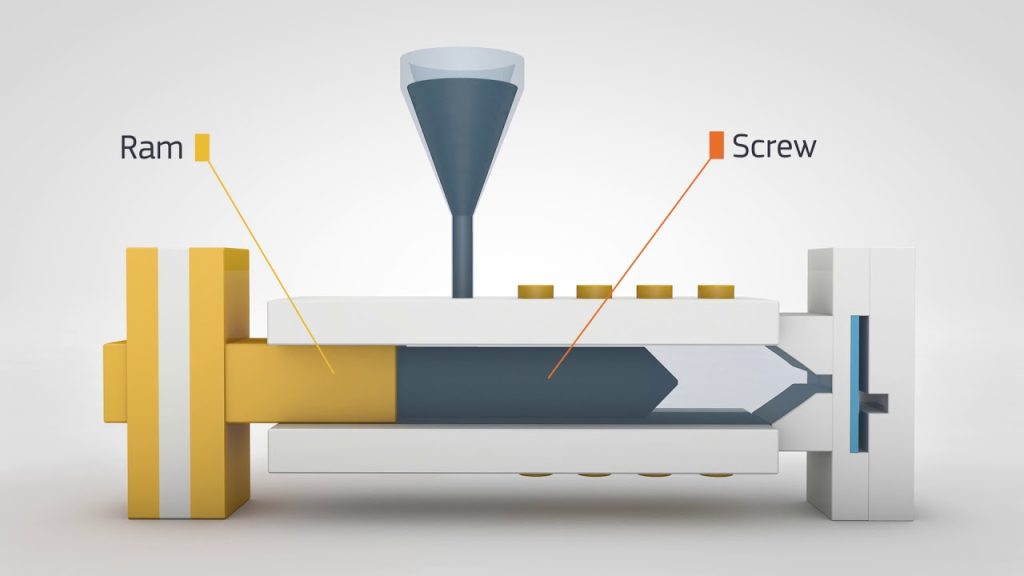Table of Contents
Injection molding is a widely used manufacturing process for producing large quantities of plastic parts. However, like any manufacturing process, it is not without its challenges. One of the most common issues encountered in injection molding is the appearance of flow lines on the surface of the finished part.
Flow lines can be a frustrating occurrence for manufacturers, as they can affect the aesthetics and functionality of the final product. In this article, we will explore the causes of flow lines in injection molding and provide insights into how to prevent and minimize their occurrence. From material selection to mold design, we will cover all the factors that contribute to the formation of flow lines, allowing you to produce high-quality parts with confidence.
Understanding the Causes of Flow Lines in Injection Molding
Flow lines are a common issue in injection molding that can affect the final product’s quality. These lines appear as visible streaks or lines on the surface of the molded part, and they can have a negative impact on the product’s aesthetic appeal and structural integrity. In this article, we will explore the main causes of flow lines in injection molding and discuss how to prevent them from occurring.
What are Flow Lines in Injection Molding?
Flow lines, also known as weld lines, are formed when molten plastic flows around an object and then meets with another flow front. This can happen when the plastic is injected into the mold cavity and the flow front splits into two or more streams. The meeting point of these streams can cause a visible line where the two fronts have joined together.
Causes of Flow Lines in Injection Molding
Several factors can contribute to the formation of flow lines. Some of the most common causes include:
1. Injection Speed: When the injection speed is too high, the plastic material may not have enough time to flow evenly into the mold cavity, resulting in flow lines.
2. Injection Pressure: High injection pressure can cause the plastic material to flow unevenly, leading to the formation of flow lines.
3. Temperature: If the temperature of the mold or the plastic material is not uniform, it can cause flow lines to appear.
4. Design of the Mold: Poor mold design can cause uneven flow of plastic material, leading to flow lines.
Preventing Flow Lines in Injection Molding
Preventing flow lines requires careful attention to the injection molding process. Here are some steps that can be taken to prevent flow lines from forming:
1. Adjust Injection Speed: Lowering the injection speed can help the plastic material flow more evenly and reduce the formation of flow lines.
2. Reduce Injection Pressure: Reducing the injection pressure can also help to mitigate flow lines.
3. Optimize Mold Temperature: Ensuring that the mold and plastic material temperature are uniform can prevent the formation of flow lines.
4. Improve Mold Design: Good mold design can help to ensure that the plastic material flows evenly into the mold cavity, reducing the risk of flow lines.
Benefits of Preventing Flow Lines
Preventing flow lines can have several benefits, including:
1. Improved Aesthetics: Flow lines can impact the appearance of the final product, and preventing them can help to improve the product’s aesthetic appeal.
2. Enhanced Structural Integrity: Flow lines can also weaken the structural integrity of the molded part, and preventing them can help to ensure that the product is strong and durable.
Flow Lines vs. Sink Marks
Flow lines are often confused with sink marks, which are caused by uneven cooling of the plastic material during the injection molding process. While both can impact the final product’s quality, they are caused by different factors and require different solutions.
Conclusion
Flow lines can be a frustrating and challenging issue to deal with in injection molding. However, by understanding the causes of flow lines and taking steps to prevent them, manufacturers can ensure that their final product is of high quality and meets their customers’ expectations. By optimizing the injection molding process and paying attention to mold design and temperature, it is possible to prevent flow lines and achieve a high-quality final product.
Frequently Asked Questions
Injection molding is a common manufacturing process used to produce a wide range of plastic products. However, sometimes the process results in flow lines. Here are some frequently asked questions and answers about what causes flow lines in injection molding.
What are flow lines in injection molding?
Flow lines in injection molding are lines or streaks that appear on the surface of a plastic part. They are caused by the flow of molten plastic meeting a surface that is colder than the plastic itself. When this happens, the plastic cools and solidifies more quickly at the surface, creating a visible line or streak.
Flow lines can be a cosmetic defect that affects the appearance of the part. They can also weaken the part by creating stress concentration points.
What causes flow lines in injection molding?
Flow lines are caused by a variety of factors, including the design of the part, the mold, and the processing conditions. The design of the part can affect the flow of plastic during injection molding, which can lead to the formation of flow lines. The mold design can also affect the flow of plastic, as well as the cooling of the part. Processing conditions, such as the temperature and pressure of the mold, can also influence the formation of flow lines.
To prevent flow lines, it is important to optimize the design of the part and the mold, as well as the processing conditions. This may involve adjusting the temperature and pressure of the mold, using different mold materials, or adjusting the injection speed or cycle time.
What are the effects of flow lines on injection molded parts?
Flow lines can have a number of effects on injection molded parts. They can affect the appearance of the part, making it look less attractive or even defective. They can also weaken the part by creating stress concentration points, which can lead to failure over time. In some cases, flow lines can also affect the performance of the part, such as reducing its ability to withstand impact or deformation.
To prevent the negative effects of flow lines, it is important to optimize the injection molding process to minimize their formation. This may involve adjusting the mold design or processing conditions, or using different materials or additives to improve the flow of plastic.
How can flow lines be minimized in injection molding?
Flow lines can be minimized in injection molding by optimizing the design of the part and the mold, as well as the processing conditions. This may involve adjusting the temperature and pressure of the mold, using different mold materials, or adjusting the injection speed or cycle time. Additionally, using materials or additives that improve the flow of plastic can help to reduce the formation of flow lines.
It is also important to consider the orientation of the part during injection molding, as this can affect the flow of plastic and the formation of flow lines. By optimizing these factors, it is possible to minimize the formation of flow lines and produce high-quality injection molded parts.
What are some common materials used in injection molding?
Injection molding can be used with a wide range of materials, including thermoplastics, thermosetting plastics, and elastomers. Some common materials used in injection molding include polycarbonate, nylon, ABS, acrylic, and polypropylene. Each material has its own unique properties, such as strength, durability, and heat resistance, which make it suitable for different applications.
In addition to these materials, there are also a variety of additives and fillers that can be used in injection molding to improve the properties of the plastic. For example, glass fibers can be added to improve strength and stiffness, while colorants can be added to change the appearance of the part.
In conclusion, flow lines in injection molding are a common occurrence that can be caused by several factors. The speed and pressure at which the material is injected into the mold, as well as the temperature and viscosity of the material, can all contribute to the formation of flow lines. Additionally, the design of the mold and the location of the gate can also play a role.
While flow lines can be unsightly and may affect the strength and durability of the finished product, they can often be minimized or eliminated through careful design and adjustment of the injection molding process. By taking the time to identify the root cause of the flow lines and fine-tuning the injection molding parameters, manufacturers can produce high-quality, defect-free parts that meet the needs of their customers.
Overall, understanding the causes of flow lines in injection molding is an important step in improving the quality and consistency of the injection molding process. With the right tools and techniques, manufacturers can achieve optimal results and produce parts that meet even the most demanding specifications.
Request a quote today!
[contact-form-7 id="1578" title="Contact form"]
Please compress the file into a ZIP or RAR file before uploading. Alternatively, send through your RFQ by email.
enquires@unitymanufacture.com





